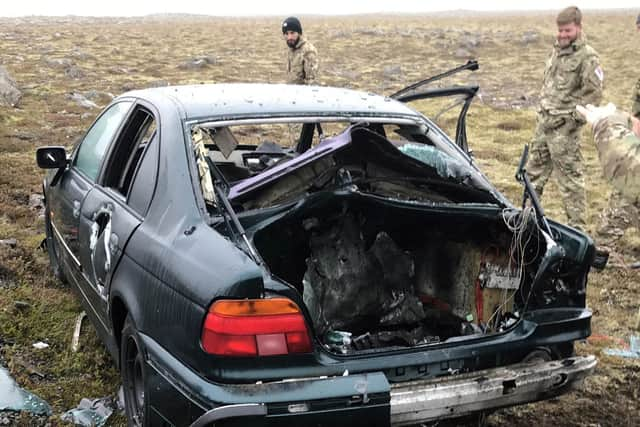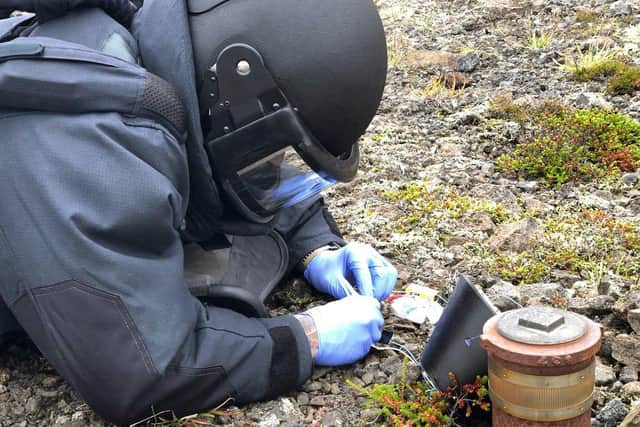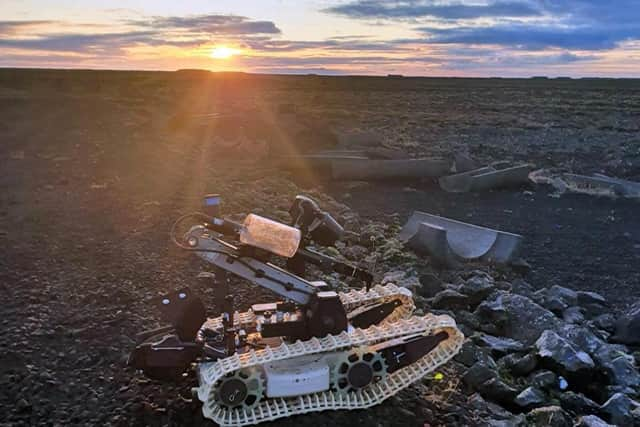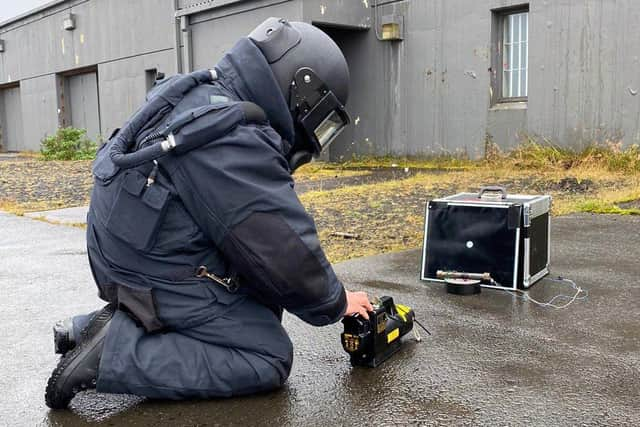Royal Navy divers face 'suicide bombers' and drone bombs in Nato drill
This article contains affiliate links. We may earn a small commission on items purchased through this article, but that does not affect our editorial judgement.
and live on Freeview channel 276
A team from the newly-formed Expeditionary Diving Group joined more than 60 munitions experts dealing with over 300 bombs, mines and homemade explosives to ensure they can neutralise them.
The navy divers, based at Horsea Island, faced everything from drone-delivered explosive devices, to 3D-printed mines and a suicide bomber as they practised alongside nine teams from seven nations to hone their land-based skills.
Advertisement
Hide AdAdvertisement
Hide Ad

The Britons left their usual fins, masks and diving sets behind in favour of a lightweight remotely-controlled vehicle, Dragon Runner, cumbersome X-ray equipment and an awkward 38kg bomb suit to deal with devices on land, rather in the water or on the shoreline.
Instead, Northern Challenge was played out on unforgiving volcanic terrain at Keflavik – next to Reykjavik’s international airport – exposed to relentless winds and low temperatures.
‘All Nato nations train their explosive ordnance disposal operators to a common standard but decades of experience in Afghanistan, Iraq and Northern Ireland have permitted the UK to hone its skills to a tee,’ said Lieutenant Commander Rory Armstrong, head of the Expeditionary Diving Group.
The exercise, known as Northern Challenge, allowed Royal Navy divers to sharpen key skills and tactics used to dispose of explosive devices safely.
Advertisement
Hide AdAdvertisement
Hide Ad

The stakes were raised for the team during their Icelandic training, with devices being sent out to target individual disposal operators.
‘Northern Challenge was an amazing opportunity to train with live explosives against a threat which is both challenging and extremely realistic,’ said Petty Officer (Diver) James Shell.
‘Every action of the operator has a consequence and any lapse in attention to detail risks your own life and that of the operator called upon to deal with the next bomb. There is simply no better place to train.’


Crucial to some of the training is being able to collect forensic evidence to understand how devices work and help authorities catch those who built them.
Advertisement
Hide AdAdvertisement
Hide AdLast year navy divers were called to evaluate attacks on oil tankers in the Gulf.
The divers returned to Portsmouth having benefited hugely from their Icelandic experience, said Lieutenant Commander Armstrong.
‘As bomb disposal experts we are trained first to the equivalent standard of an army operator before acquiring the specialist maritime skills to deliver in our own environment,’ he added.


‘I’m tremendously proud of my team’s ability to more than match the capabilities of our multinational counterparts in what is in effect a secondary role.’
Advertisement
Hide AdAdvertisement
Hide AdThe Expeditionary Diving Group was formed this year in place of the long-standing Fleet Diving Group.
The new team is responsible for deploying specialist dive teams around the world to protect naval and British shipping, key ports and infrastructure.
They have also been assigned as the dedicated bomb-disposal team accompanying the UK’s new carrier task groups.
Looking for the latest Royal Navy updates from Portsmouth? Join our new Royal Navy news Facebook group to keep up to date.
A message from the Editor, Mark Waldron
Thank you for reading this story. The dramatic events of 2020 are having a major impact on our advertisers and thus our revenues.
The News is more reliant than ever on you taking out a digital subscription to support our journalism.
Every subscription helps us continue providing trusted, local journalism and campaign on your behalf for our city.
Comment Guidelines
National World encourages reader discussion on our stories. User feedback, insights and back-and-forth exchanges add a rich layer of context to reporting. Please review our Community Guidelines before commenting.
